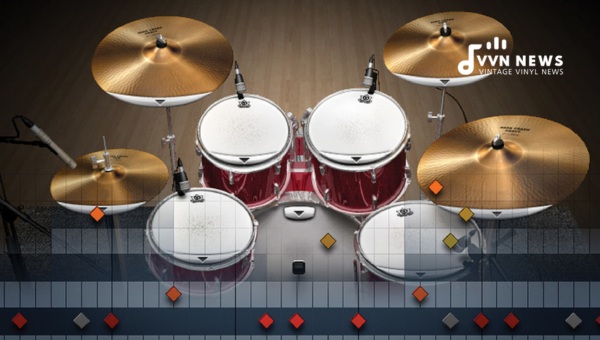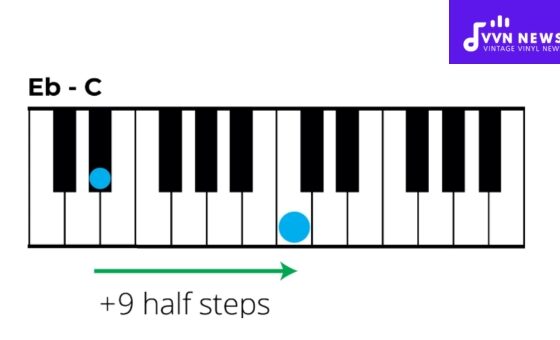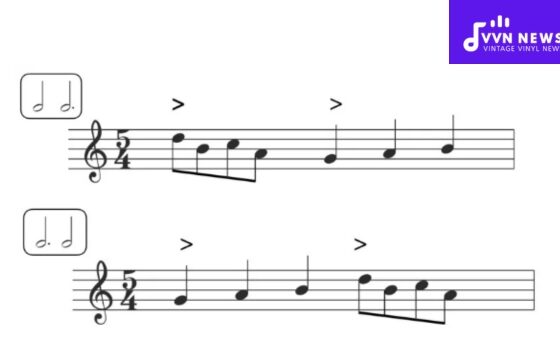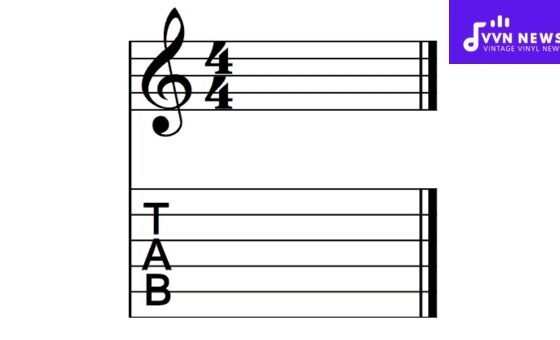As an intrepid musical explorer, I’ve spent countless hours sitting behind the drum machine, fine-tuning those patterns and sequences.
But in all my years of knob-twisting and pad-smacking, there’s one indispensable truth I’ve learned: the magic doesn’t come from a fancy machine; it comes from the soul that’s fed into it.
And so, I’d like to share what I’ve learned along this rhythmic journey by offering 20 tips to bring your drum programming to life.
Whether you’re new to beat-making or a seasoned veteran seeking fresh inspiration, it’s essential to remember that your drum tracks are not just about keeping time.
They are the heartbeat of your song, the pulse that sets the tempo, and the groove that moves the body.
The intricacy of adding humanity to these mechanical rhythms may seem daunting at first, but often, it’s more attainable than you think.
Listen closely as my journey unfolds beneath your fingertips and breathe new life into your beat-making process.
20 Tips to Bring Your Drum Programming to Life
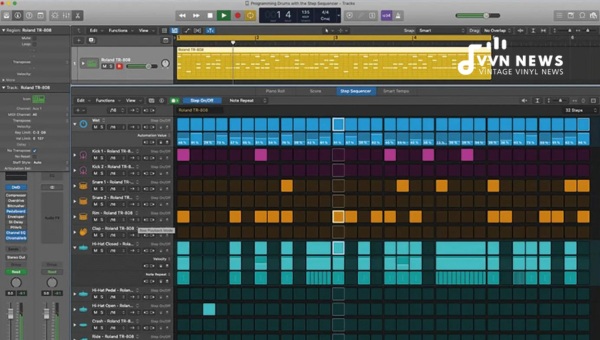
In music-making, breathing life into your drum programming can transform a flat, static beat into a lively rhythm that propels your music and moves your audience.
When creating drum patterns, there’s always room for improvement. Here, I’ve compiled a list of 20 tactics to give your drum programming more life and musicality.
Use Dynamic Velocity Variations
Adding dynamic velocity variations is one of the most effective ways to breathe life into your drum patterns.
Like a live drummer won’t hit each drum equally every time, your programmed drums shouldn’t either.
When you stick to uniform velocity throughout your sequence, the sound may become robotic or monotonous, lacking the natural dynamics of a live drummer.
Instead, try varying the rates of your hits – a lighter snare here, a heavier kick there; it all makes for more dynamic beat sequences.
Start by highlighting specific beats with incredible velocity, such as ones on which an accented snare hit might fall (typically beats 2 and 4 in a typical bar).
This produces more expression and creates a compelling rhythmic push-and-pull.
The variations needn’t be drastic; even subtle changes can have an enormous impact on the energy and feel of your music.
Experiment With Different Drum Samples
Do not be afraid to experiment with different drum samples. Shake things up! Other models will offer different tones, textures, and timbres, adding richness to your overall beat sequence that cannot be achieved by repeating the same sounds repeatedly.
If you use an electronic vibe in one section of your song, perhaps use stark, sharp synthetic drum samples.
On the other hand, softer or more organic cells incorporate acoustic drum samples for a natural feel.
Frequency variations between samples can also work wonders for giving uniqueness to every beat on your pattern while keeping it cohesive at its core.
Also Read: 25 Best Drummers Of All Time [Rhythm Legends Who Drove The Beat]
Incorporate Ghost Notes for Groove
Spooky as it sounds, ghost notes are accurate. Those subtle, almost-there drum hits add complexity and rhythmic sophistication to your drum programming.
To incorporate ghost notes, program softer hits on your snare or hi-hats in between the main beats of your sequence.
These lighter, almost unheard percussions create a sense of movement and groove that gives depth to your rhythm.
Remember that ghost notes should be at a significantly lower velocity than your main beats. It’s their subtlety that makes them hauntingly effective.
Humanize Your Drum Patterns
Let’s face it; no drummer hits the exact center of the drum with robotic precision every time. Those slight inconsistencies are a big part of what makes live drums feel so organic and alive. So, how can you inject this human factor into your programming?
Start by employing random variations in timing and velocity across your drum tracks. Most DAWs (Digital Audio Workstations) have a “humanize” or “randomize” function that can automatically introduce these slight inconsistencies in an otherwise perfect beat sequence — some hits will be ever so slightly off-time or softer/louder than others.
Add Fills and Drum Rolls
Fills and drum rolls are potent tools for injecting life into your programmed drums!
Fills are transitions between different song sections, while rolls — quick, successive strokes on a drum — can ramp up the excitement, leading to significant song events.
Make sure you place these elements carefully within structured spaces like the end of every 4th, 8th, or 16th bar according to the scale of transition required.
There’s an art to their placement: overdo fills and rolls, which can become disruptive; underdo them, and your song might feel predictable.
Layer Drum Sounds for Depth
I cannot stress enough the importance of layering in drum programming. I don’t mean indiscriminate sound stacking; that’s a recipe for chaos.
Strategic layering allows you to combine different drum samples — each with their unique signatures — to create a full-bodied, personalized drum sound.
Placing a harsh kick with a soft one or layering snares that offer distinct timbres can bring about the much-needed richness and create sounds unique to your programming style.
When layering sounds, ensure they complement each other instead of battling for dominance. Balancing layers is crucial!
Vary the Hi-Hat Patterns
Hi-hats can be an excellent source of rhythmic interest and energy. Instead of just using uniform eighth or sixteenth notes, consider varying their arrangement and velocity to create more stimulating patterns.
Experiment alternating between closed high hat, semi-open, and open hi-hat within your beat.
Chances are you’ll stumble onto more grooves and find unusual rhythms that can add an unexpected dash of spice to your song—working with synths? Try synth hi-hats for a unique electronic flavor.
Use accents on the off-beats to create a syncopated feel. Play around with note lengths – long, sustained hits mixed with short and sharp ones make for captivating contrasts.
Utilize Swing and Shuffle
Many times, the difference between a static, lifeless drum loop and something that makes you want to get up and dance is in the amount of swing or shuffle applied.
Swing refers to delaying the off-beats to create a ‘swaying,’ less mechanical feel.
Shuffle, often used interchangeably with swing, turns regular eighth notes into swinging eighths by shortening the first and extending the second.
Both techniques can enhance your track’s groove by introducing a subtle rhythmic tension.
Also Read: Zildjian Review [The Iconic Brand Behind The Best Drum Cymbals]
Incorporate Percussion Elements
Don’t limit yourself to just kicks, snares, and hats! Introduce percussion elements like bongos, congas, shakers, or tambourines into your pattern.
These extra sounds add texture and help strengthen specific beats within your bar or fill in gaps for an extra layer of depth.
A shaker going through every quarter note beat guarantees constant movement in your rhythm section—making it harder for any listener to stay still!
Experiment With Odd Time Signatures
Most music sticks around 4/4 time signature (four beats per measure), but there’s a whole world of grooves beyond this.
Jazz and progressive rock are rich tapestries of unusual time signatures: 7/8, 5/4, or 11/16.
These can add an exciting twist to your tracks that may grab listeners’ attention. They can be tricky, but they’re brilliant devices for syncing your music once you wrap your head around them.
Remember to keep the groove paramount even when working with complex time signatures.
Create Unique Snare and Kick Patterns
Much of the groove in a drum sequence comes from the patterns created by the snare and kick drums.
Keeping these patterns exciting and lively is crucial to maintain listener interest.
Don’t anchor yourself to the usual “kick on 1 & 3, snare on 2 & 4” pattern—branch out!
Experiment with variations, alternate placements, or introducing syncopated rhythms to catch listeners off guard and inject some energy into your tracks.
For instance, delay your snare hits for an unexpected back beat or front-load your sequence with rapid-fire kick drums.
Remember that subtleness often packs the biggest punch, so additions should serve the overall rhythm rather than overshadow it.
In electronic music, odd or unexpected snare and kick patterns can provide that extra ‘edge’ that sets your track apart.
Infuse creativity into your drum arrangement by exploring rhythmic subdivisions like sixteenth notes or triplets.
Play With Drum Tuning and Pitch
Along with creating unique rhythm patterns, adding pitch changes to individual drum hits can bring an exciting new level of realism and complexity to drum programming.
Consider treating each drum hit as you would any other melodic instrument in a mix—by adjusting its pitch.
For example, snares can be tuned higher for a tight snap sound or lower for a weightier backbeat.
You might also consider adjusting your kicks relative to the key of your song. Don’t be afraid of playing around — tuning and pitch alterations can add a deeper layer to your rhythm section.
Pitch adjustments aren’t limited to kicks and snares; hi-hats can benefit too! For an added dose of reality, replicate hi-hat ‘choke’ by corresponding open hi-hat notes with a sudden drop in pitch as if a drummer physically closed it.
Also Read: Metallica Makes Peace With Cover Band [Behind The Music Drama]
Use Realistic Cymbal Crashes
When it comes to drum programming, the devil is in the details. I genuinely believe that one of these crucial details is realistic cymbal crashes.
Have you ever seen a drummer who smashes the impact cymbal after every fill or transition? Unlikely. The key is intent—strategic placement over excessive use.
A well-placed cymbal crash can emphasize a transition, highlight a successful payoff, or punctuate the end of a musical phrase.
So, remember this while placing your crashes and punctuating your musical phrases – less is often more.
Implement Randomization for Realism
Randomness can bring an organic touch to your digital drums by capturing that human imperfection we all love about live performances.
Slight tempo variations, minor velocity changes in drum hits, or slightly offbeat placements can make your sequence feel less rigid and more lifelike.
A word of caution, though: too much randomization can make your rhythm sound sloppy rather than organic.
Therefore, the key is subtlety—add minor randomness to infuse life without compromising the overall structure and coherence of the beat.
Mix and Pan Drums Effectively
When it comes to drum programming, mixing, and panning are like breaths of fresh air.
Percussion sounds often occupy different pockets in the stereo field, mimicking their positions on a live drum kit.
Panning your drums effectively spreads them across the stereo field, creating depth and allowing each element its own space.
Start planning your drums by panning your kick and snare to the center, as they are traditionally considered the backbone of your beat.
Toms can be panned from left to right or vice versa to reflect their physical positioning.
For cymbals like hi-hats, side-to-side tracking can add a compelling dynamic. Always remember the goal is not to recreate reality but to leverage stereo space for the best effect.
The next step is balancing levels, which is imperative for achieving a solid drum mix.
Keep your kick at a level where it’s powerful yet doesn’t overpower everything else. The snare should cut through without piercing, while hats and cymbals should sit in the mix without obfuscating other elements.
Emulate Drumming Styles and Genres
Em emulate real-life drumming styles and genres to make your programmed drums feel more organic.
There’s a world of difference between how drums are played in jazz versus punk rock.
Listen to several types of music and observe how different genres utilize unique rhythmic patterns – jazz might involve more intricate hi-hat work.
At the same time, rock could see heavy emphasis on kicks and snares. Don’t hesitate to study your favorite drummers’ performance styles from these genres, pick up their signature grooves, and then try giving them an interpretive twist.
Add Subtle Time and Pitch Modulation
Time and pitch modulation might not seem intuitive when it comes to programmed drums, but trust me, they can do wonders in subtly driving home authenticity.
Micro-timing shifts – sparingly done – can emulate the minor timing inaccuracies innate to human performance.
Pitch modulation can add that bit of ‘imperfect-perfectness’, where every hit doesn’t sound precisely identical.
Remember, you’re not looking for dramatic pitch or time shifts – just enough variance to make the sequence feel more human.
Also Read: Can We Mix Bass In Stereo? 2025 [Mixing The Kick Drum & Bass]
Work with Drum Loops as a Base
If you’re stuck on where to start or looking for inspiration, drum loops can be a great Kickstarter.
Whether it’s a pre-existing loop from your DAW or one you download from a sound library, these loops can serve as robust foundations for your unique beat structure to evolve.
Experiment with editing the loop—maybe chop it up, rearrange the sections or layer it with your own programmed beats.
You can develop intricate and creative drum patterns by using loops as a guideline and embellishing them according to your musical vision.
Incorporate Live Drumming If Possible
In drum programming, integrating elements of live drumming can add a layer of authenticity and humanity that is otherwise difficult to replicate.
I highly recommend recording samples from a live kit if you have access. These can then be mixed into your programmed sequences, offering realistic textural nuances and mechanical irregularities.
Remember that no two hits on a real drum are ever quite the same due to countless factors like stick positioning, drum tuning, room acoustics, and more.
Even superficial live drum sample layers could invigorate and humanize your programmed beats.
Remember that it needn’t be either-or between programming and live drumming.
Use your programmed drums as a solid rhythmic base, then augment them with bits of live drumming for an intricate mix.
Focus on Groove and Feel Over Precision
What makes drums come alive in any context is not precision but groove.
When programming drums, it’s easy to get caught up in perfect rhythm alignment or flawless repetitions, but remember—the heart of timeless rhythms lies in their ‘imperfections.’
We tend to connect emotionally with the groove and feel rather than precision.
This is why many great producers intentionally nudge their beats slightly off-grid or introduce modest time fluctuations—it makes something quantized on a computer feel more human.
Learn to avoid robotic precision; instead, focus on creating rhythms with character—ones that morph organically across bars—as if played by a living-foot shuffling drummer filled with soul whose purpose is perfect timing and moving hearts.
Also Read: 20 Best Boost Pedals In 2025 [Pump Up Your Guitar Performance]
FAQs About Drum Programming
What is drum programming?
Drum programming uses software or hardware to create, modify, and arrange drum sounds to form beats and rhythms for music production.
How can I humanize my drum patterns?
Add irregularities such as subtle timing shifts or velocity variations to humanize your drum patterns, emulating how a real drummer might play.
Should I only use one type of drum sample in a beat sequence?
Variety is vital in music production. Experiment with different drum samples within a beat sequence to give it depth and make it more dynamic.
Do just rhythm and tempo define a sound drum track?
While rhythm and tempo are crucial elements of a drum track, the groove, feel, and dynamic variations also contribute significantly to connecting it with listeners.
Why do my programmed drums sound robotic?
Programmed drums might sound robotic if they lack dynamic velocity variations and human-like irregularities in live drumming; adjusting these aspects can bring them to life.
Conclusion
Nurturing the organic soul of your drum programming doesn’t need to be overwhelming.
You can achieve an engaging rhythmic landscape with fantastic depth by embracing dynamic variation, experimenting with diverse samples, humanizing patterns, and focusing on groove over precision.
Remember the adage: practice makes perfect. The more time you spend honing these skills and techniques, the more naturally they’ll come alive in your drum programming.
Dive into these creative strategies; stir up some beats that move bodies and touch hearts and souls. Keep the moment alive, and let it breathe!
